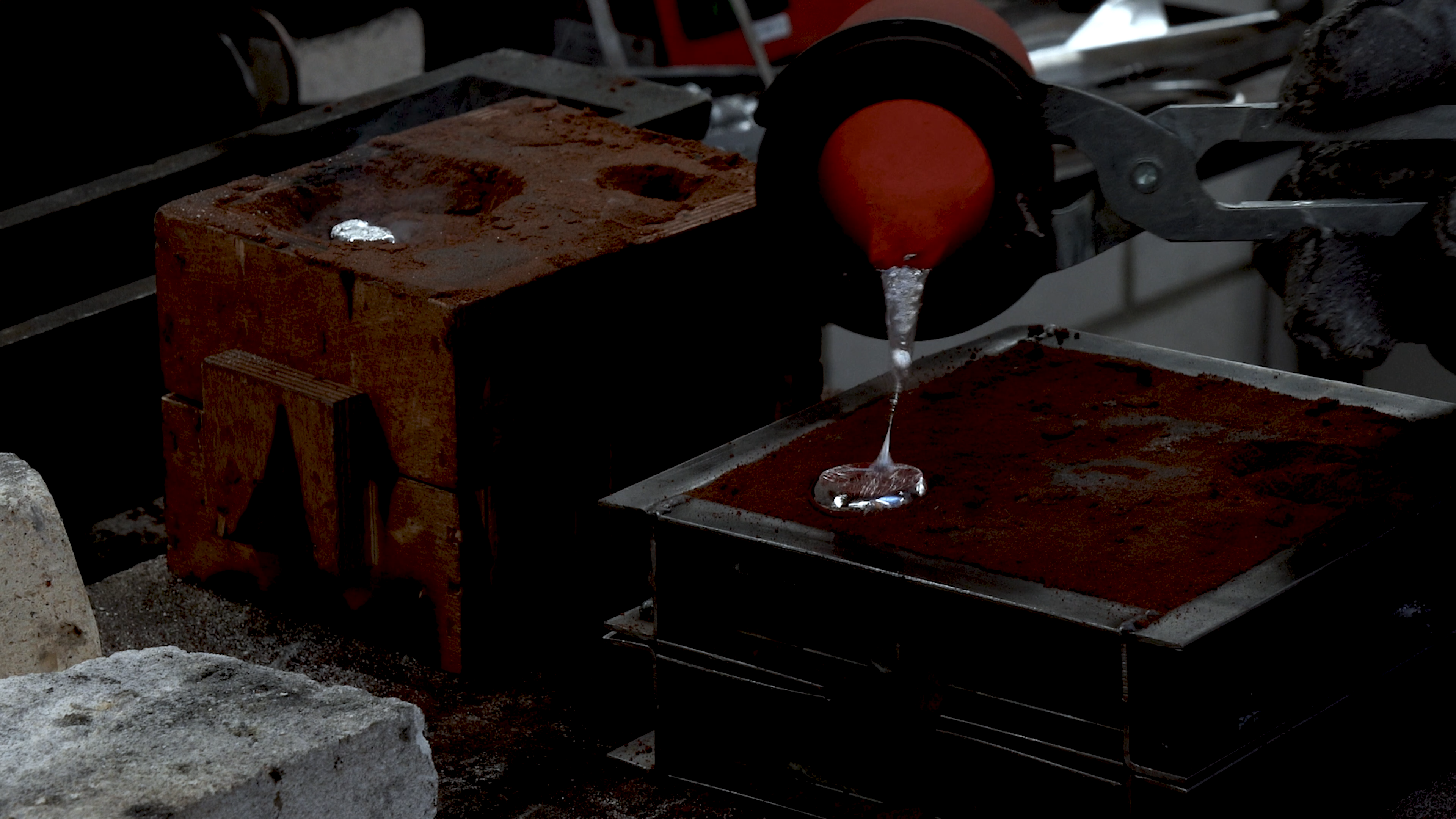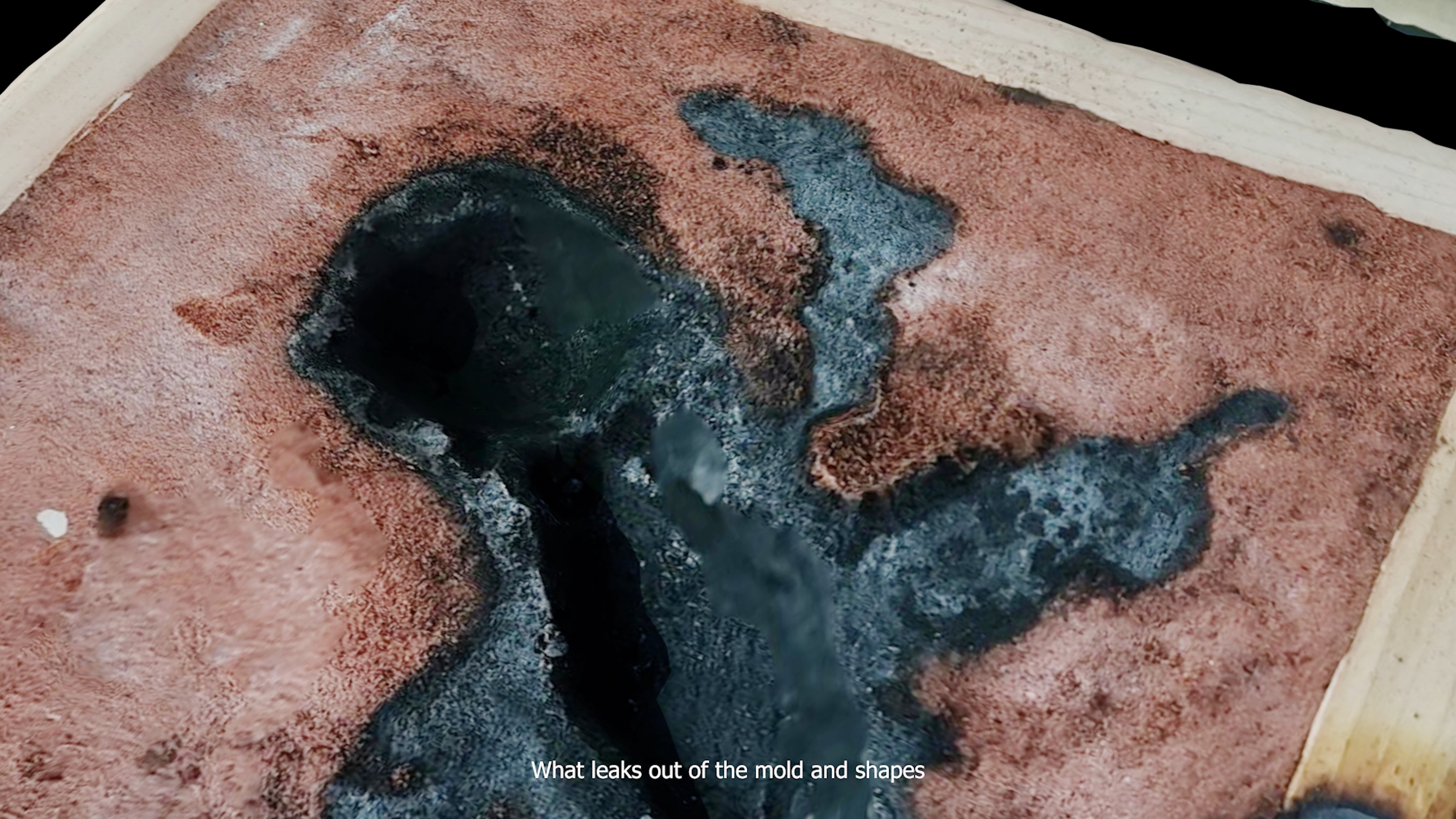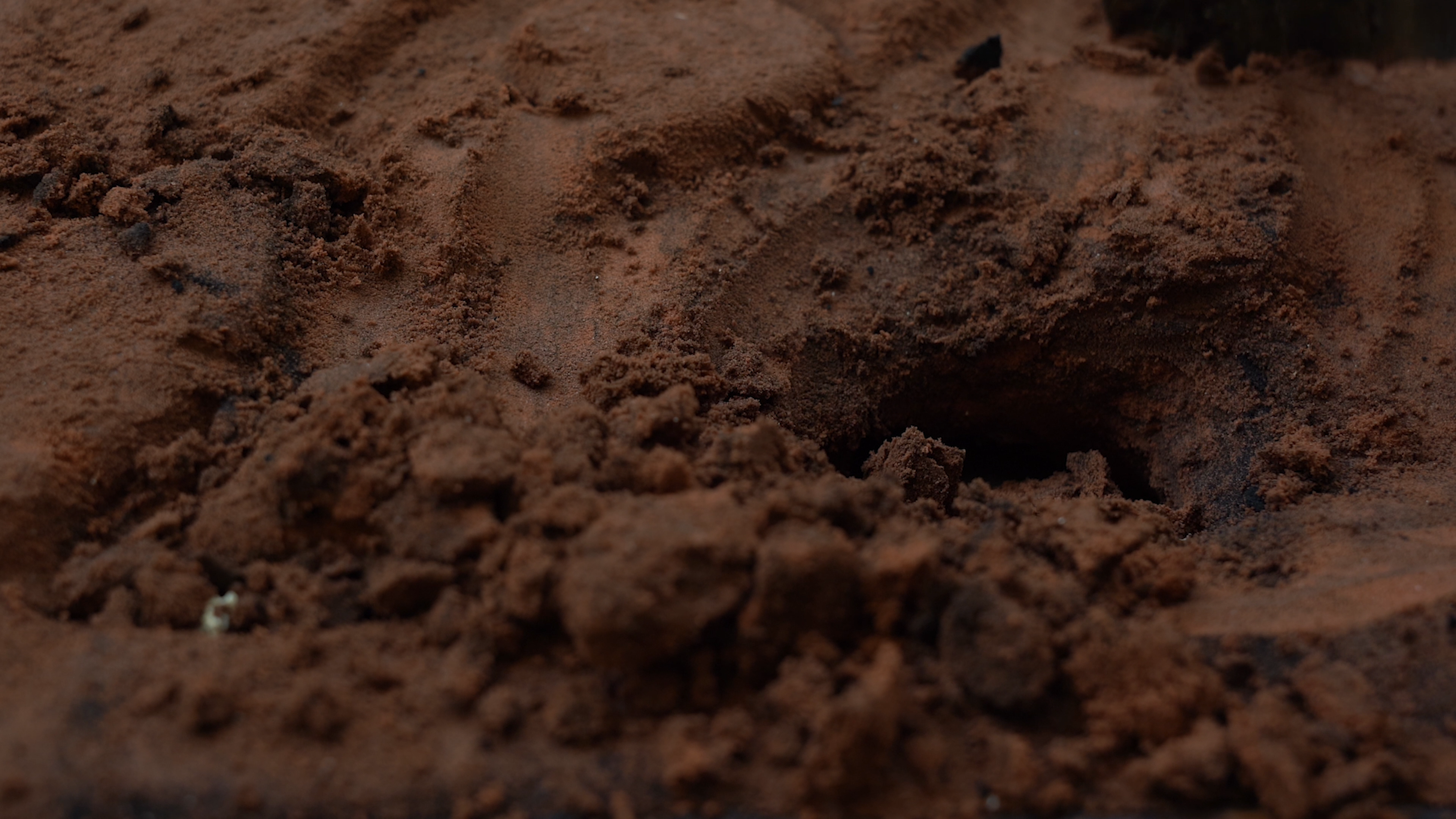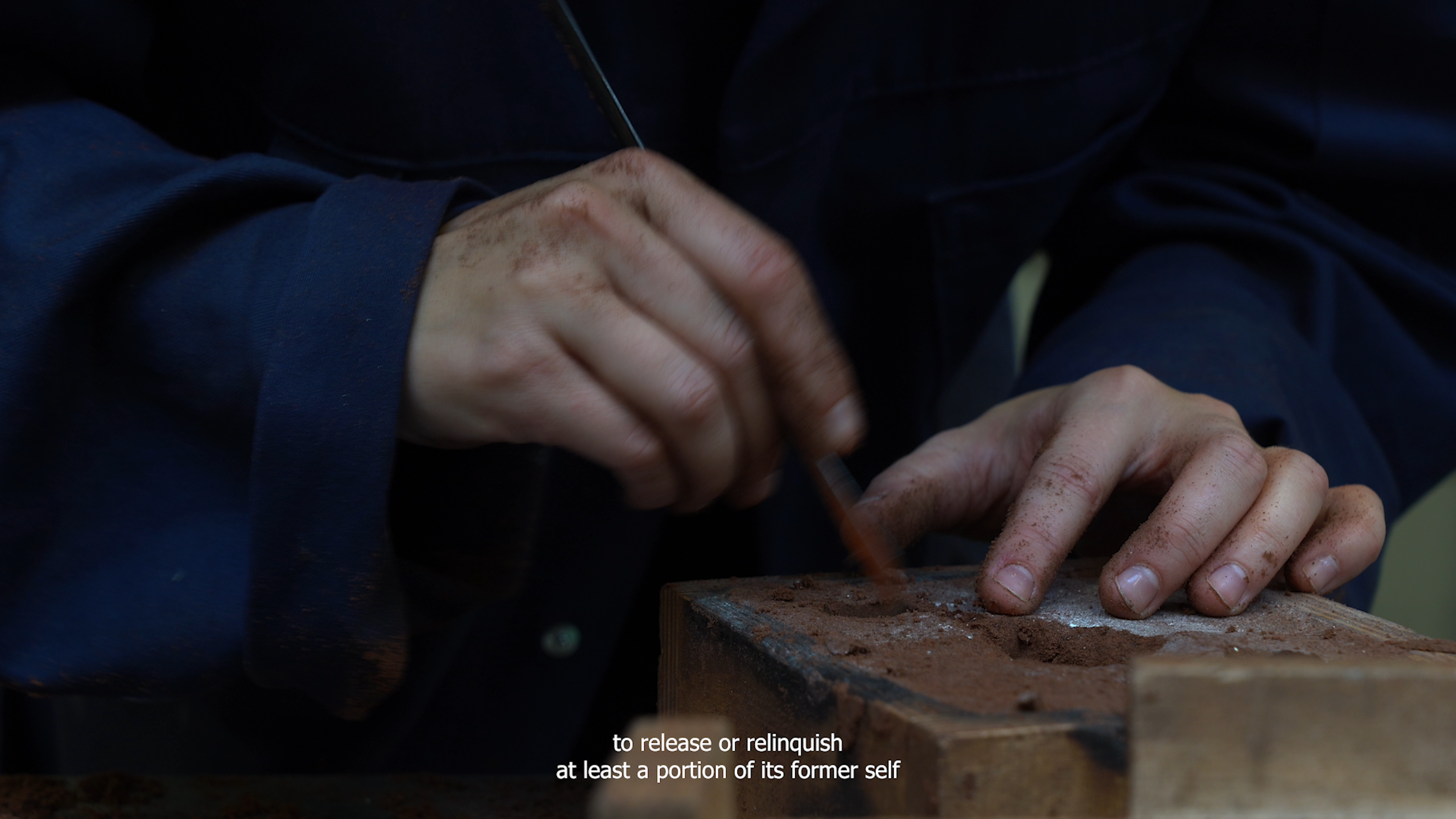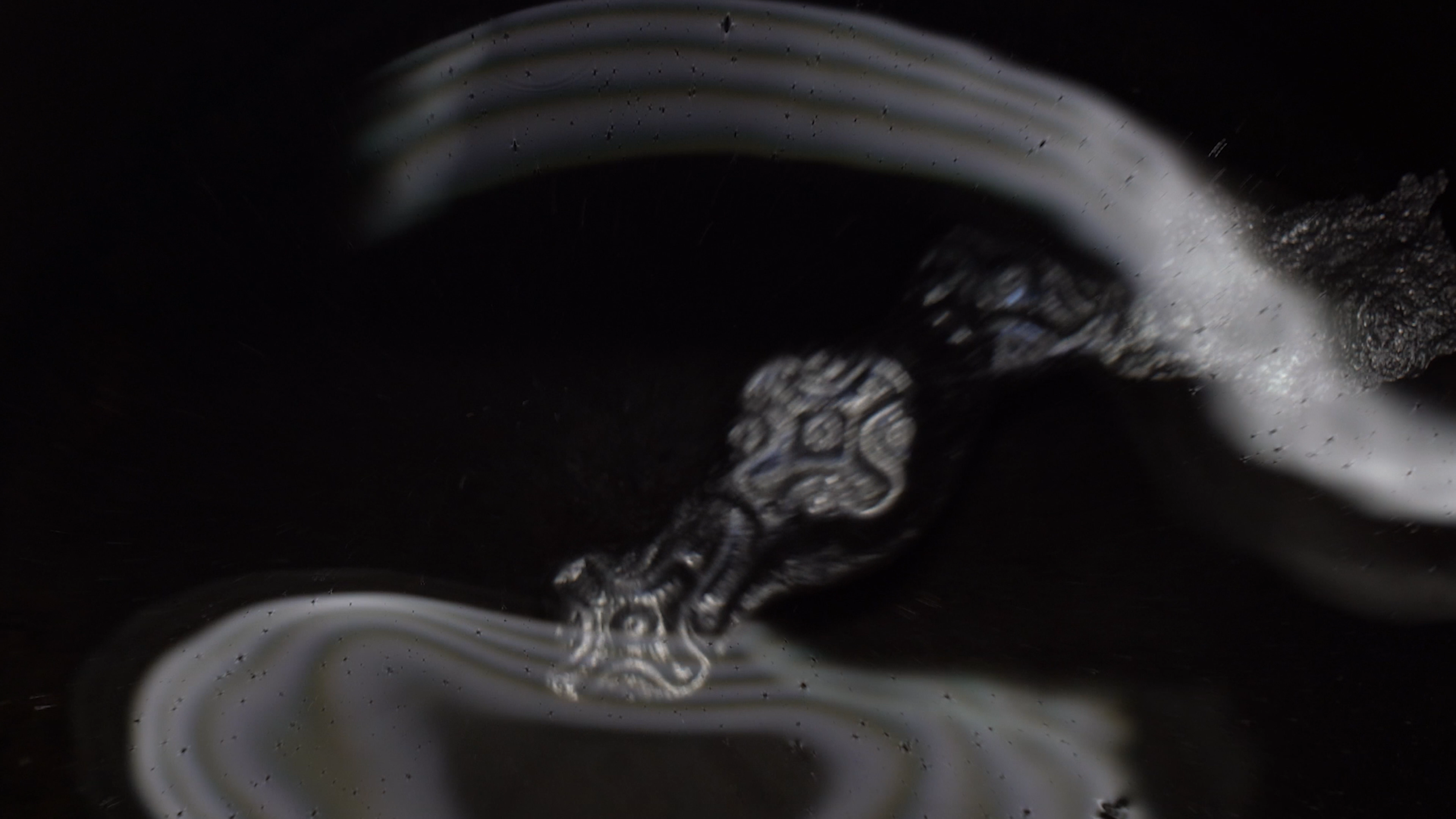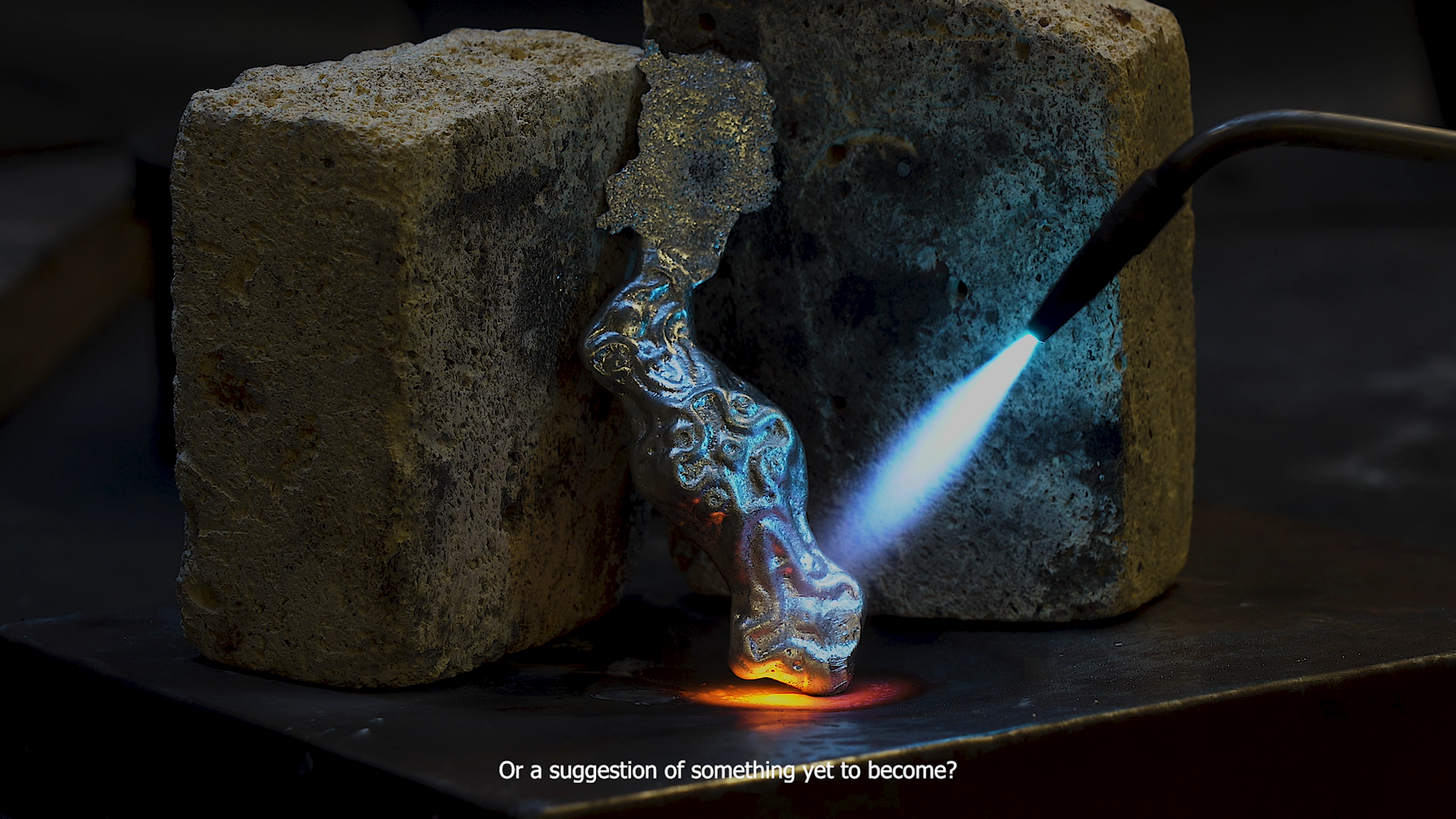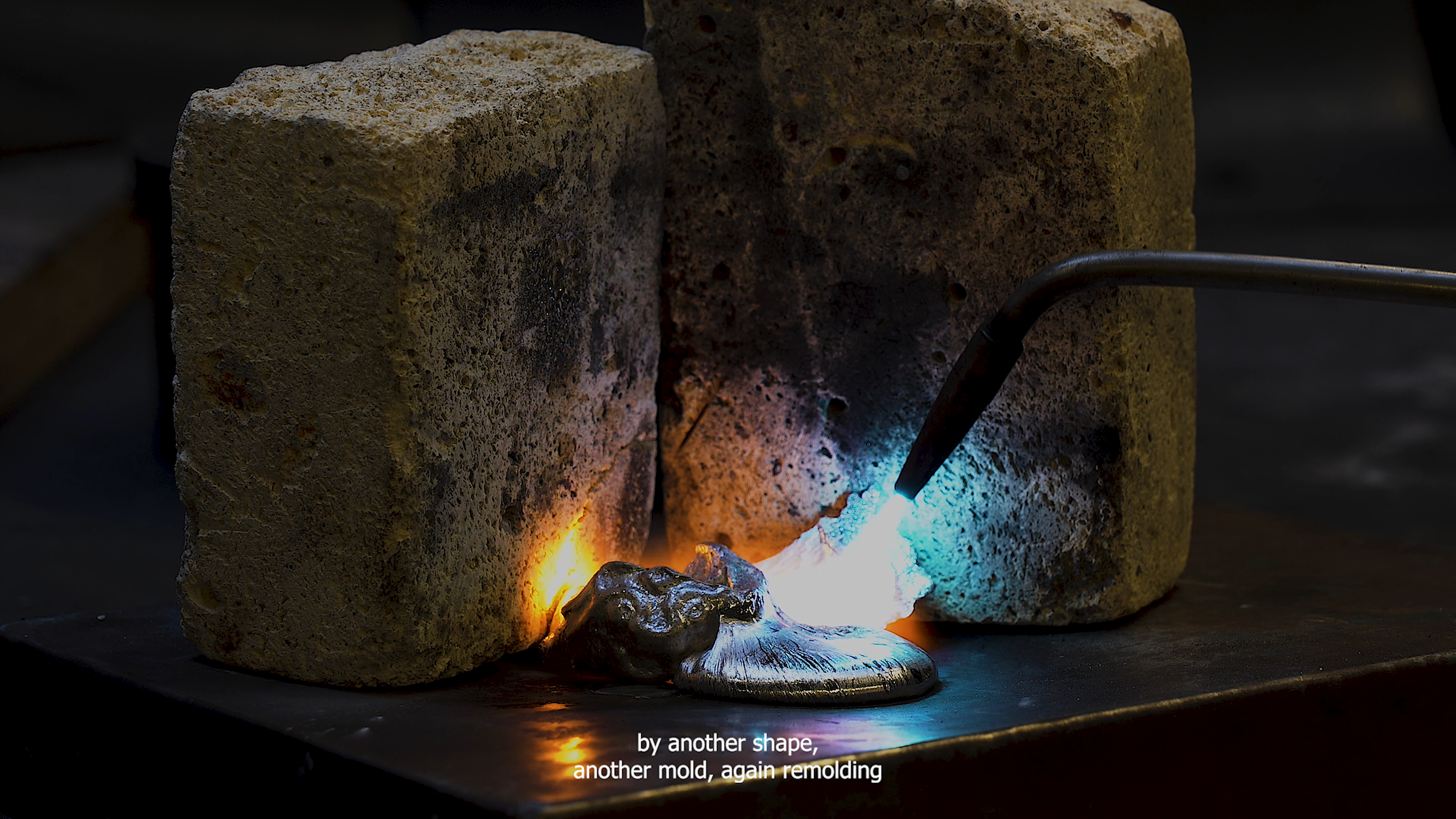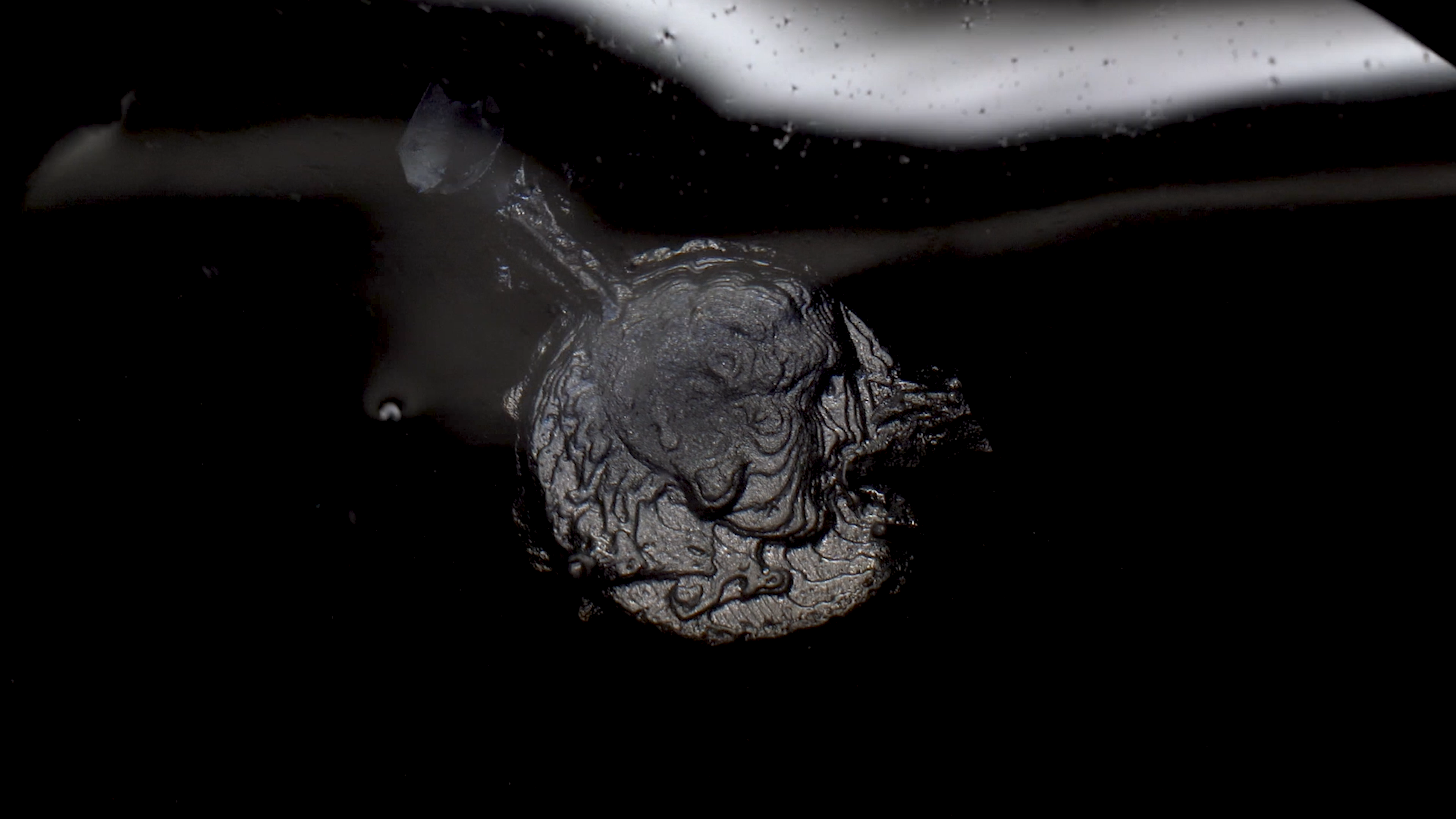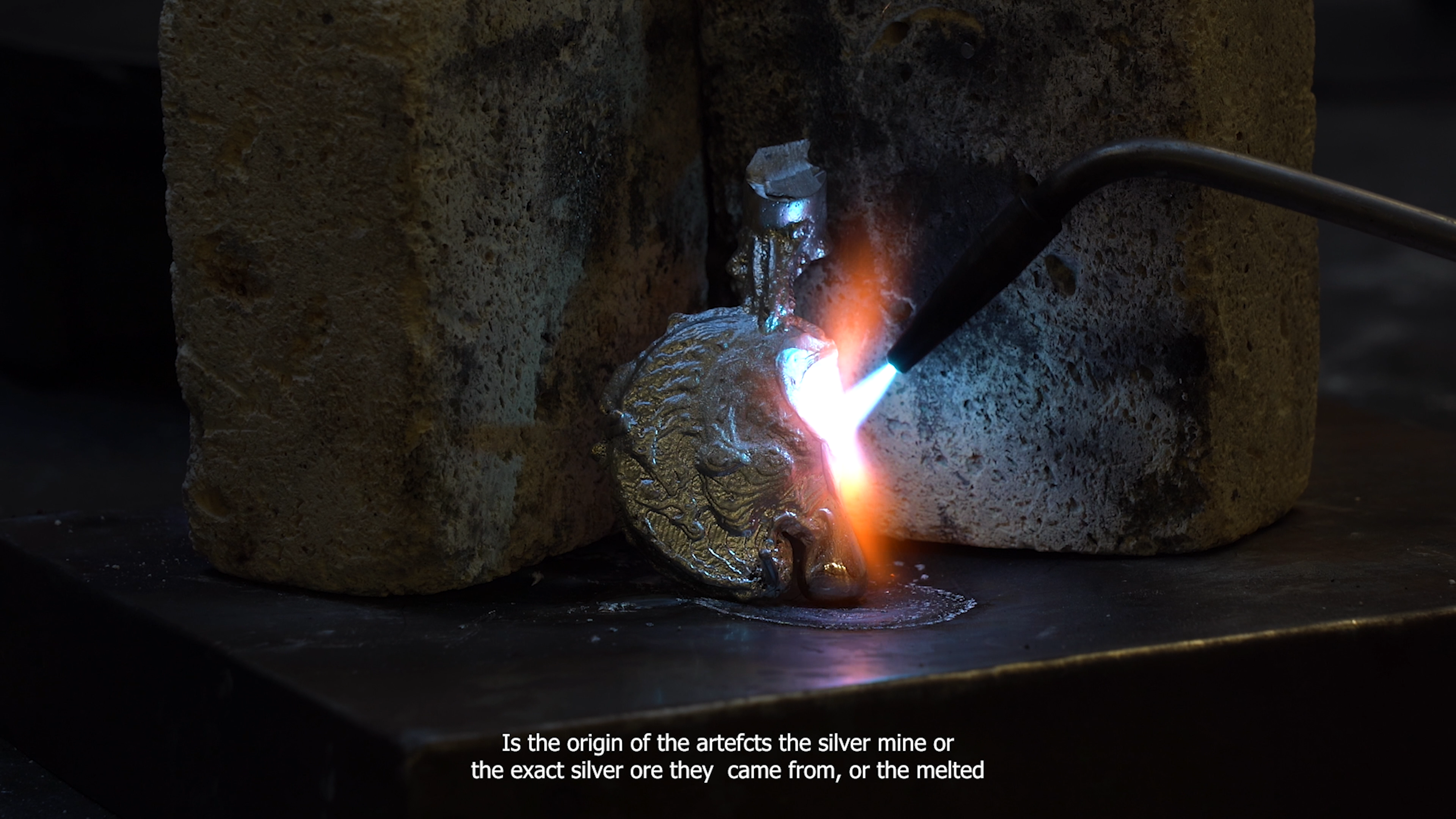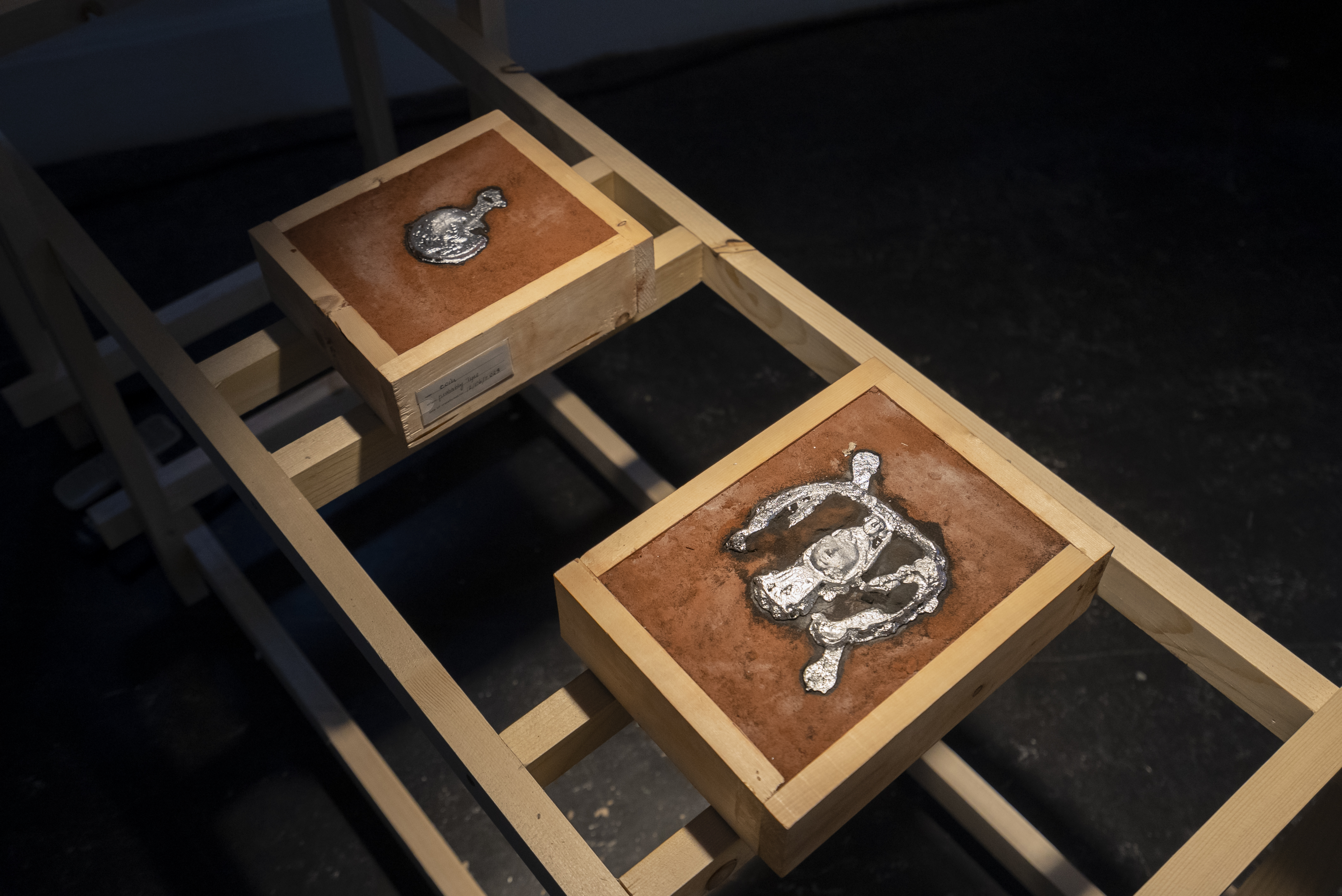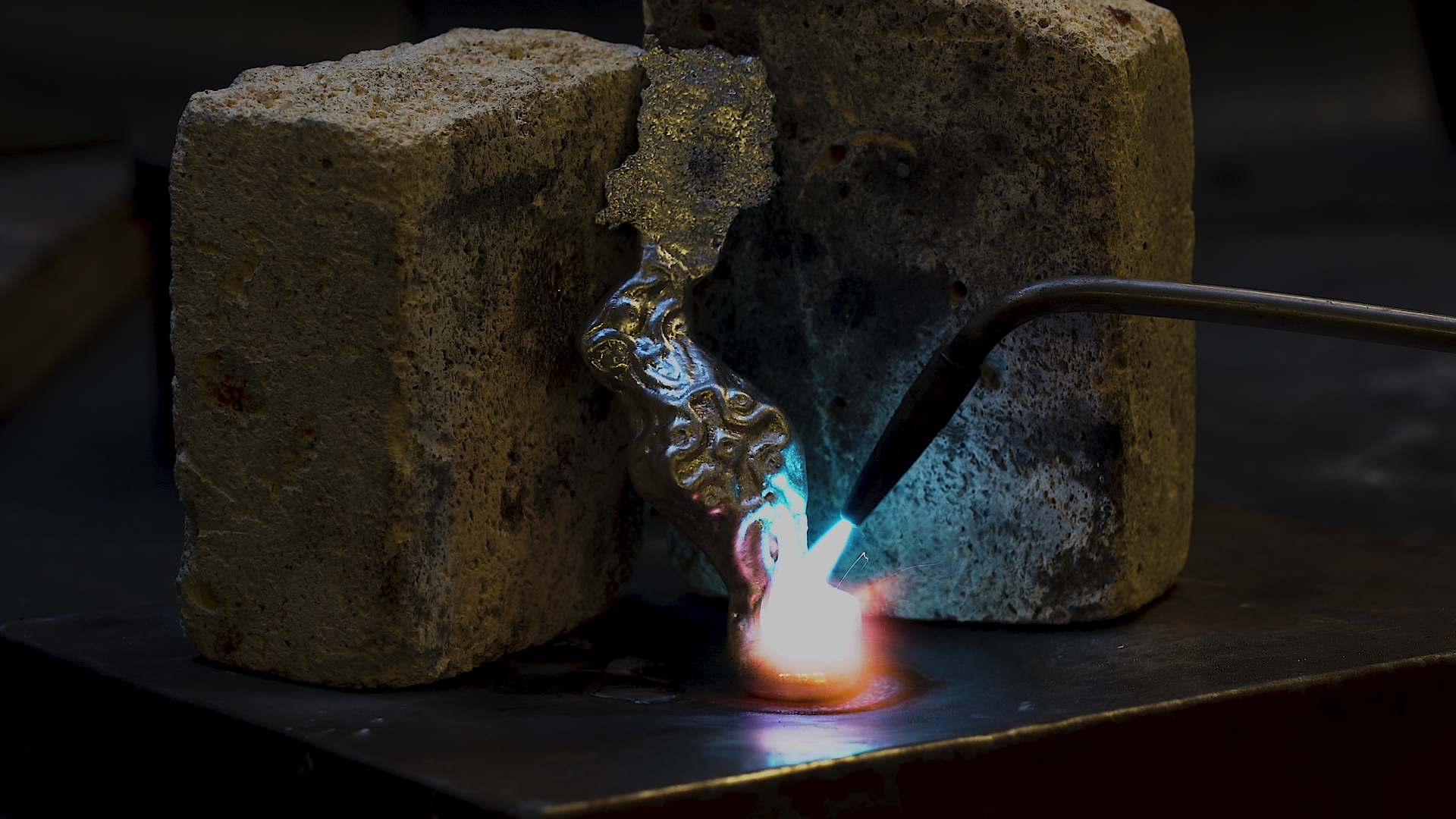From Ore to More
In Alicja Konkol’s video essay ‘From Ore to More’, silver spoons - once a symbol of social status and belonging serve as both a material resource and a starting point without a pre-determined destination. The multi-media installation explores the concepts of categorization, in-betweenness, temporality, and malleability, encapsulated by the transformative nature of silver. Questioning the arbitrariness of origins and their inherent classification, one’s sense of belonging is represented by the unpredictability of continuous molding and re-melting of artifacts whose origins are also assumed.
![]()
In medieval times, silver spoons were emblematic of social status, later held as family heirlooms or even a form of currency, embodying the relationships between objects, materials, and cultural contexts that shape their existence. These objects, especially in public archives, are typically organized based on their presumed origins, places of discovery, current location, inventory numbers, inherent value, or materials. However, they often fail to acknowledge the journey they have traversed or their role as witnesses of exchange, implying the temporality of rootedness, origins, or a sense of belonging. Similar to silver spoons, silver coins, brooches, hair combs, or pitchers have symbolized various degrees of social status and belonging. By repeatedly melting archaeological artifacts sourced from digital archives, fusing them together, the project explores the breakdown and rearrangement of forms. Resulting in new, meaningful, and unpredictable shapes that defy categorization, highlighting the inherent temporality and unpredictability of the transformational journey and arbitrariness of origins.
Moreover, the process of mold-making challenges conformity to predetermined categories in object creation. By dismantling molds to create new ones and remelting casted objects, the project questions the value of what remains and what emerges.
Conventionally, molds restrict the emergence of unexpected shapes, but this process embraces their temporality and emphasizes the unpredictability of outcomes and therefore counters classification, mirroring our sense of belonging. The project investigates categorization itself as molds are destroyed and reused to create new objects that often embody incomplete, in-between shapes or excessive forms.
This process challenges the notion of a world constrained by rigid classifications, extending beyond the objects housed in archives.
It raises the question: Does something lose its value when it becomes unrecognizable and difficult to classify, even if its intrinsic value remains unchanged? Is one excluded if quite literally, does not fit the mold it was intended for? Or does it possess the potential for inclusion as a reminder of something already existing or a suggestion of something yet to become? Is a leaking mold simply pointing us toward the expansion of the category?
Graduation project Master Non-Linear Narrative, 2023
Waag FutureLab award 2023
